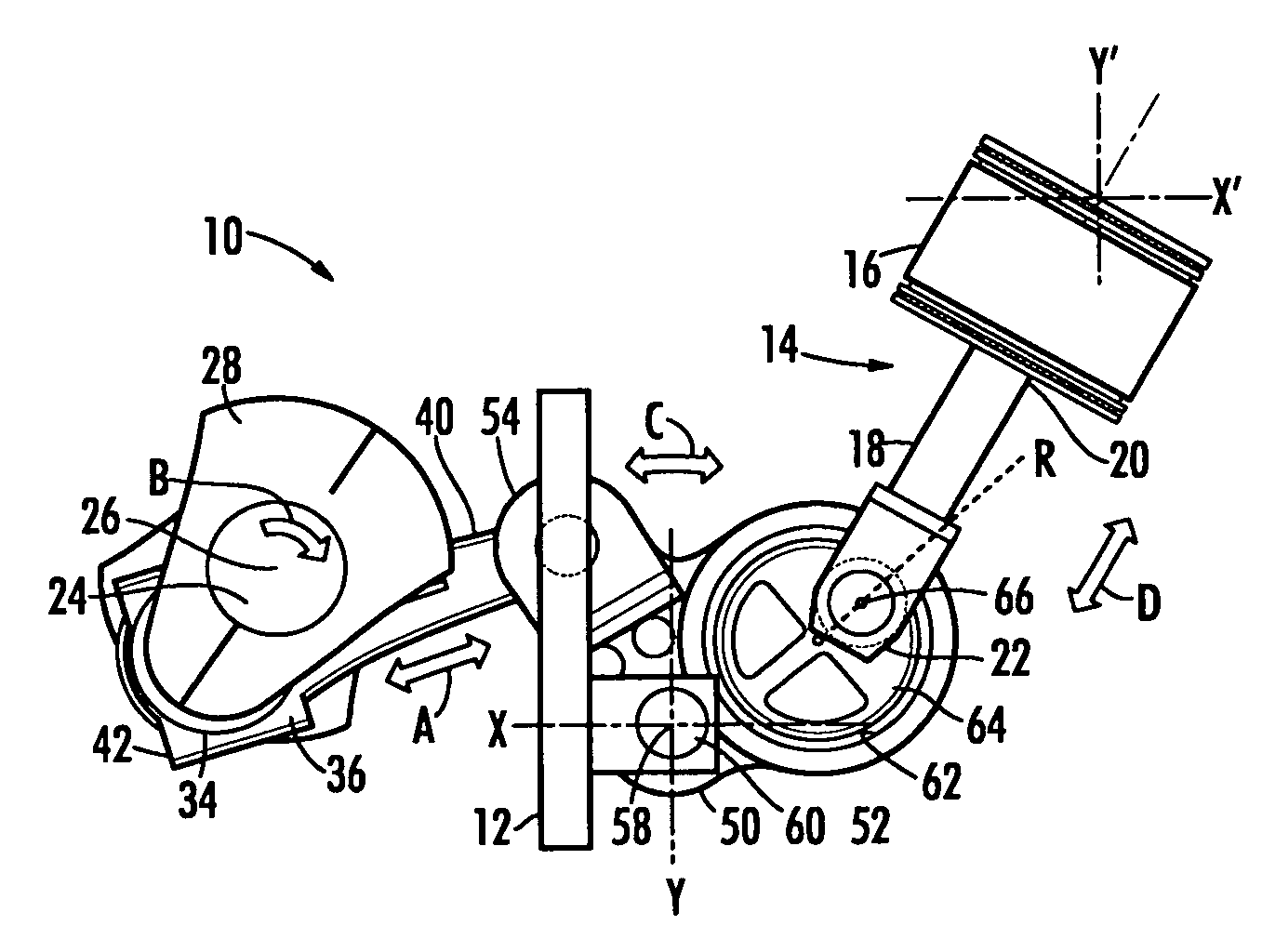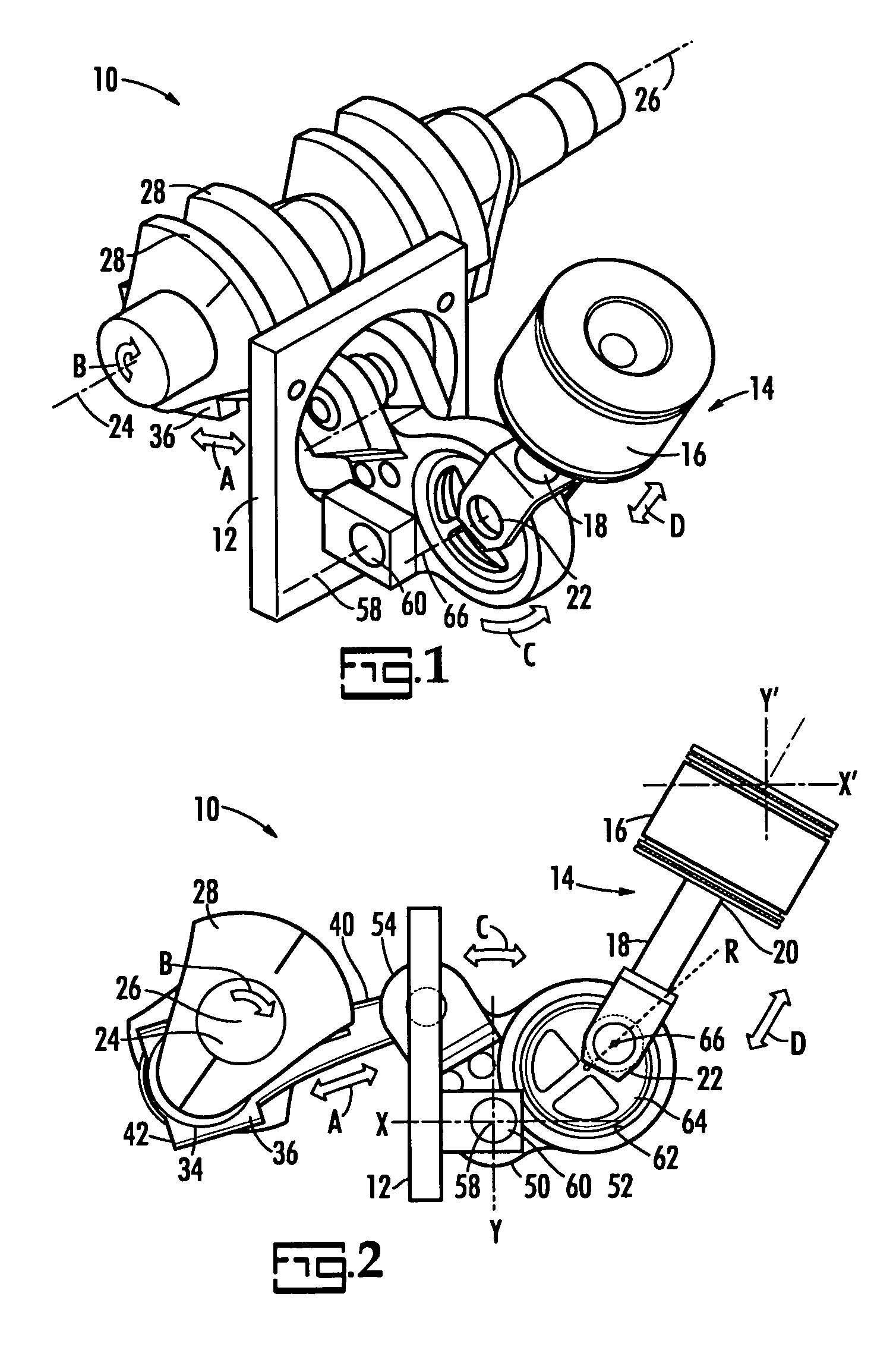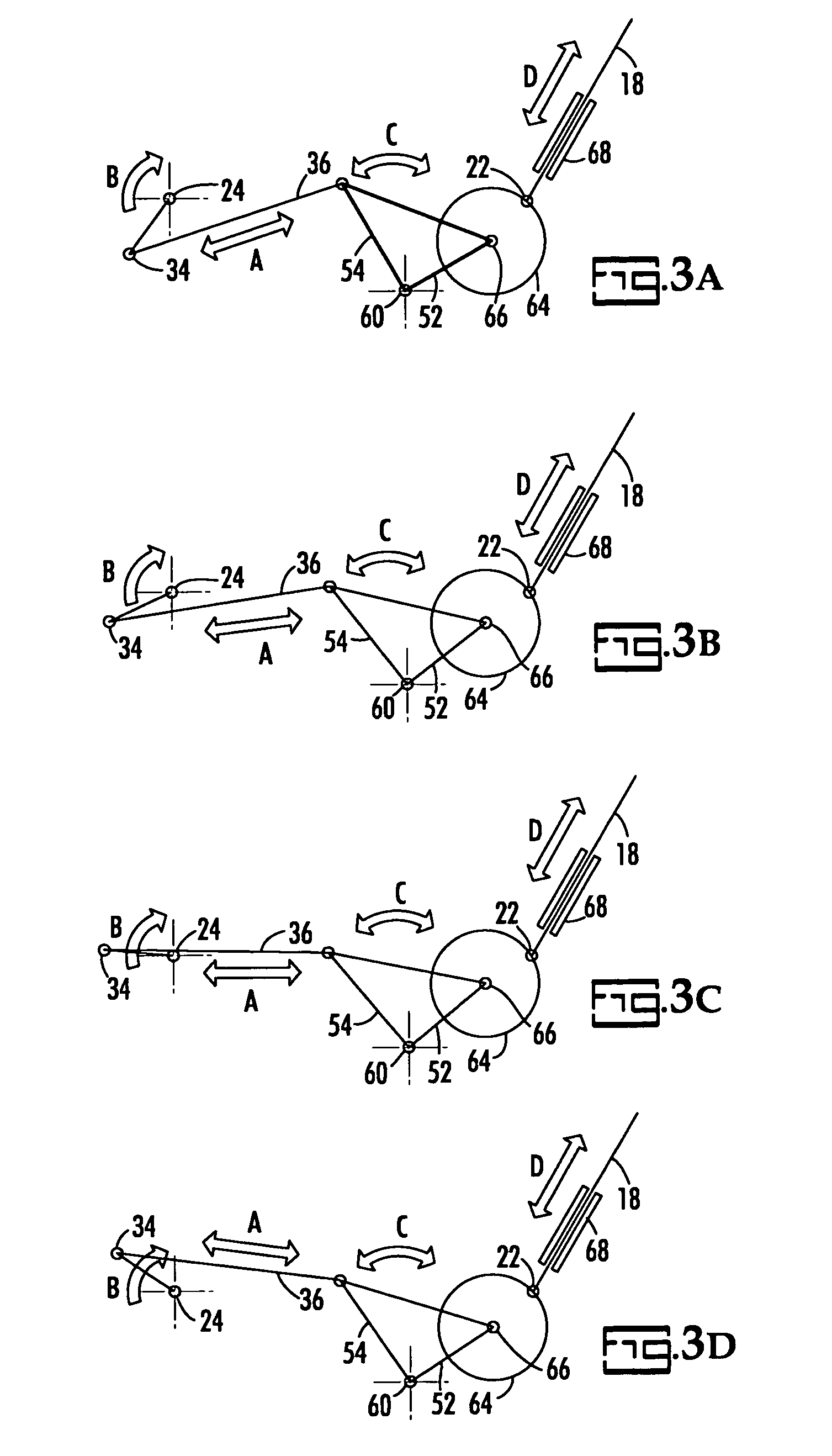Motion control mechanism for a piston engine
- Summary
- Abstract
- Description
- Claims
- Application Information
AI Technical Summary
Benefits of technology
Problems solved by technology
Method used
Image
Examples
Embodiment Construction
[0029]The present invention is an improved engine. The present invention improves that prior art, or “classic,” piston / crankshaft arrangement that is a part of many engines and pumps. The improvement, as will be explained in more detail below, comprises the insertion of two components between the piston rod and the crankshaft in order to allow the engine designer to alter the geometric relationship between the piston and the crankshaft, and, with that altered geometry, the mechanical performance characteristics of the engine or pump. In particular, the engine designer can change the piston stroke length, the overall rate of travel of the piston, the instantaneous rates of piston movement as it goes through its cycle so that some portions of the travel are slower and others faster than before, and change the angle between the direction of piston motion (coincident with the long axis of the piston) and a line perpendicular to the axis of the crankshaft.
[0030]By slowing the relative ra...
PUM
 Login to View More
Login to View More Abstract
Description
Claims
Application Information
 Login to View More
Login to View More - R&D
- Intellectual Property
- Life Sciences
- Materials
- Tech Scout
- Unparalleled Data Quality
- Higher Quality Content
- 60% Fewer Hallucinations
Browse by: Latest US Patents, China's latest patents, Technical Efficacy Thesaurus, Application Domain, Technology Topic, Popular Technical Reports.
© 2025 PatSnap. All rights reserved.Legal|Privacy policy|Modern Slavery Act Transparency Statement|Sitemap|About US| Contact US: help@patsnap.com



